When it comes to choosing a pet, many families are worried about the potential for aggression in certain breeds. While all dogs have the potential to be aggressive, some dog breeds have a reputation for being friendly and virtually non-aggressive.
There are a few different factors that help determine how aggressive or non-aggressive a particular breed might be. Genetics play an important role in determining the temperament of a particular breed, as do socialization and training. Potential pet owners should also consider whether they can give their chosen dog enough exercise, attention, and stimulation so that it won’t develop problem behaviors out of boredom or frustration.
The following list details some of the least aggressive breeds available today:
Overview of Least Aggressive Dog Breeds
When it comes to dogs, it is important to look beyond the physical characteristics to get an understanding of the type of temperament the breed might have. While there are many different factors that can affect a dog’s aggression level, some breeds are naturally less likely to become aggressive than others.
1. Beagle

The Beagle is one of the least aggressive dog breeds and is an ideal pet for families with children. Though they can be stubborn and independent, their intelligent and affectionate nature makes them easy to train and quite loyal.
Developed as a hunting hound that would track animals by scent, Beagles have an excellent sense of smell – which, if not properly managed, can lead the dog on a search without regard to safety. However, with some attention to training protocols, this smart little pup can make a wonderful addition to any family!
Beagles enjoy being with their families in all activities around the home for which they are suited, too. As long as basic obedience is enforced consistently throughout ownership, Beagles serve remarkably well as good obedience dogs in all settings. Additionally, certain games along the lines of agility may become enjoyable obligations from time to time that your Beagle will eagerly anticipate playing.
They require daily exercise for mental challenge and physical stimulation; walks in urban parks or rural areas work best for their wide-roaming tendencies that preserve instinctive drive.
2. Bulldog

They are one of the least aggressive breeds, with an even-tempered nature and gentle dispositions. While they were originally bred as fighting dogs, modern iterations are bred to be lovable pets and they thrive on companionship. Bulldogs typically make excellent family pets but keep in mind that these placid canines may be a bit lazy around the house.
Bulldogs enjoy adequate exercise and playtime; however, short bursts of activity are typically optimal for them. Bulldogs do not have a lot of stamina due to their flat faces, so long walks or overly active games should be avoided. This breed is prone to heat exhaustion if exercised outdoors during hot weather conditions, so always have plenty of water available for them.
When it comes time for a nap, Bulldog puppies can curl up just about anywhere and enjoy an afternoon snooze away from all the hustle and bustle!
3. Cavalier King Charles Spaniel

The Cavalier King Charles Spaniel is a gentle, loving, and friendly breed that is known for being one of the most affectionate types of dogs. While they may appear to be small and fluffy, they are actually quite active and can make great jogging companions.
Due to their adapted nature, Cavaliers make excellent family dogs as they not only get along with children well but also with other dogs and strangers.
Because of their obliging nature, Cavalier King Charles Spaniels do not exhibit many aggressive behaviors or have any history or tendencies towards violence or biting. They are easily trained due to their intelligence and loyalty which makes them a wonderful companion for any person looking for a docile pet.
4. Collie
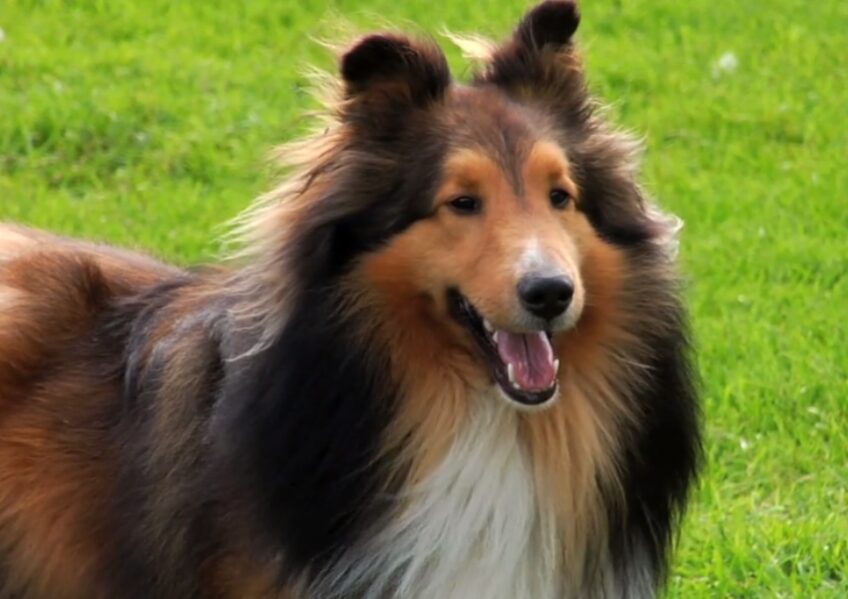
Collies, especially the Rough Collie and Smooth Collie, are known for their loyal and gentle nature. Generally, they bond quickly with their owners and other animals, making them a great companion for families with children or other pets. It is important to note that Collie does require firm training since they may be prone to stubbornness.
The Collie has strong herding instincts so sometimes these dogs will try to herd small animals and children. If this occurs, you can redirect this tendency by providing consistent leadership during walk time with a firm “no” if your dog attempts to nip. In addition to that, ensure that they get plenty of exercises as this physical activity plays an important role in regulating their behavior while giving them an appropriate outlet for their herding instincts.
In general, the Collie exhibits low levels of aggression provided that they receive the right amount of training and attention from their owners. This relatively good-natured breed is not prone to growling or barking for no reason—making them a great choice for those seeking a peaceful household pet.
5. Greyhound

Greyhounds, known for their speed and grace, is one of the gentlest breeds on the planet. These large sighthounds make calm, loving companions and can be gentle with children when given a relaxed environment to live in. An ancient breed often known as the “royal dog of Egypt” is popularly said to have originated in England and has been prized hunters by Pharaohs.
The breed’s temperament is generally friendly and loving – these dogs live up to their reputation as gentle giants. They are docile, patient, calm, and willing to please their owners which makes them great family pets. Greyhounds are generally very well-behaved dogs that love snuggling with their people at home or out on walks in public places.
They usually will not initiate contact with other dogs; however, if other canines approach them with friendly intentions then these sweet-natured pooches will happily reciprocate the affection.
With proper exercise, high-quality nutrition, regular grooming sessions, socialization activities, and plenty of attention from their human companions – Greyhounds make delightful and loyal family companions that stay devoted throughout life!
6. Labrador Retriever

The Labrador Retriever is a popular breed for those who are looking for an outgoing and friendly dog that is easy to train and live with. These dogs are known for being some of the least aggressive breeds due to their obedient and gentle nature. They usually get along well with children, strangers, and other animals.
Labradors are intelligent, loyal, and affectionate dogs. They love to interact with their owners and show them affection in return. Because they want to please their owners so much, they respond quickly to commands and are easy to train. Not only that, but they’re also active dogs who need regular exercise in order to stay happy and healthy.
As far as aggression goes, Labradors typically have a pleasant temperament that makes them ideal for households with young children or seniors who may require a loyal companion by their side. This is because Labradors tend to be non-aggressive in virtually every situation – even when provoked. Because of this leniency towards strangers, boisterous behavior around unfamiliar people can become a problem if not corrected early on in life. Even then, the breed should definitely be considered more “easygoing” than anything else!
7. Maltese
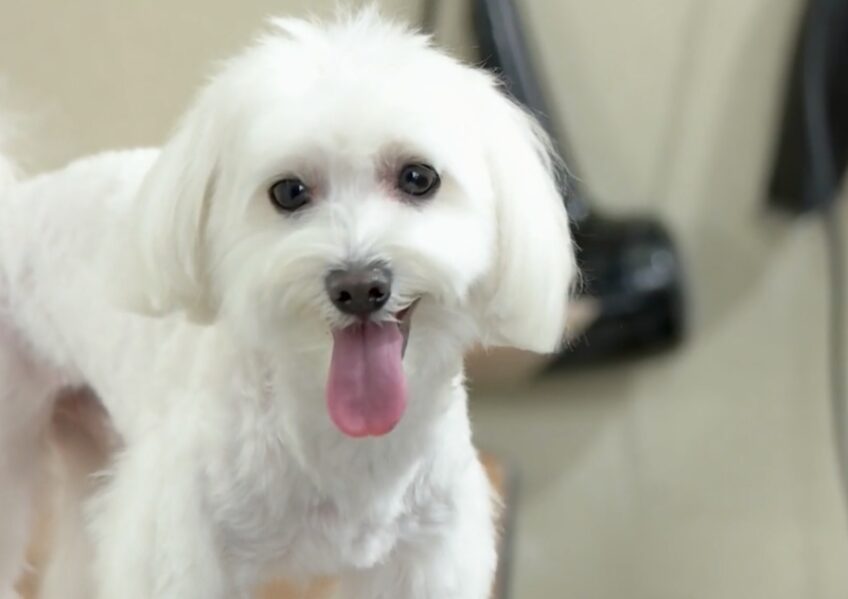
The Maltese are a small, gentle dog breed with a long, silky white coat. Despite its delicate appearance, the Maltese are intelligent and enthusiastic, while also being one of the most easily trained breeds around.
Maltese dogs are generally known to be happy-go-lucky and energetic dogs that love attention and affection. They get along well with children, cats, and other pets if properly socialized from a young age. They are not naturally aggressive or territorial type and adapt easily to family life. Maltese make excellent companion pets for adults as well as children because of their intelligence, devotion, unconditional love for their owners, and docile nature.
They have no tendency to show aggression; it is friendly with both people and other animals even strangers. The small size makes them easygoing and further reduces their chances of being aggressive when in a smaller home or apartment or in any case despite its reputation as a toy dog; the Maltese can provide great companionship due to its energy levels and playful nature. It loves nothing more than just spending time with its family members playing games indoors or on one lap.
If properly socialized from a young age the Maltese has no destructive behavior tendencies while being one of the few that do not bark excessively if bored or left alone which makes it an ideal apartment pet too!
8. Poodle
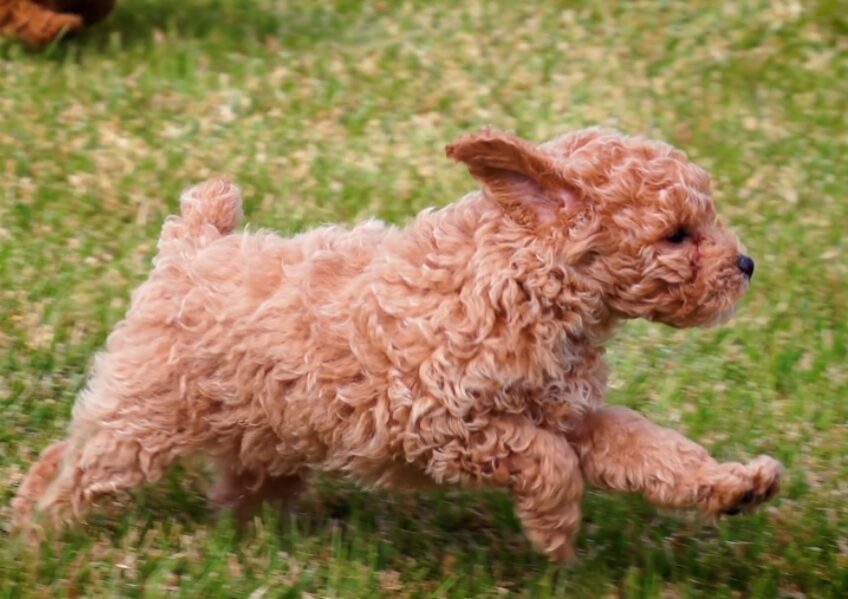
The Poodle is known for being one of the friendliest, most loyal, and least aggressive breeds. They are highly intelligent and active canines that adore attention. As a hypoallergenic breed, the Poodle does not shed and is a good option for those with allergies.
If trained and socialized well from an early age, the Poodle will be affectionate towards strangers and children. Additionally, they are also less likely to bark as aggressively compared to other breeds due to their good-natured temperaments. In general, Poodles will react more fearfully if they feel threatened or overly excited, so they require calm owners who can keep them in check.
9. Pug

The pug is a small breed of dog with large, expressive eyes, a square-shaped head, and a short snout. It has a wrinkled brow and a distinctive “smile” on its face, making it look quite happy and amusing.
Pugs are generally quite good-natured and even-tempered, making them excellent companion animals for people of all ages. They do not require much exercise or activity and are content to spend most of their time lounging around with their owners. They usually get along well with other animals but they may be territorial when it comes to food or toys. Pugs often show affection towards their owners and will follow them around the house. They bark only when something out of the ordinary happens such as visitors approaching the home or strange noises outside; otherwise, they are fairly quiet dogs.
Since they have low energy levels, pugs are not well suited for rigorous activities like running or jumping but rather enjoy leisurely strolls in their own neighborhood or nearby parks. One important thing to remember about pugs is that they require regular grooming due to their thick fur coats; brushing should take place at least once per week in order to remove dirt, and tangles and prevent matted fur from forming.
All in all, the pug is an ideal choice for those looking for a laid-back canine companion who won’t be too demanding of attention or energy levels during the day-to-day routine!
10. Shih Tzu

The Shih Tzu breed is one of the least aggressive dog breeds, making them a popular choice for families. Intelligent and affectionate, these furry little bundles of joy are social, full of character, and make great companions.
They were first bred by imperial court members in China over a thousand years ago as companion dogs and their distinctive lion-like look has been recognized for its beauty throughout the centuries. Undoubtedly one of the cutest breeds among small to medium-sized dogs, Shih Tzus love people and snuggle up close to their owners.
Originally bred as guard pets in China centuries ago, they’re gentle with children yet playful enough to engage in active games with them too. Given their size and outgoing nature Shih Tzus require only short walks on a leash which makes them the perfect pet for apartments or small homes that don’t have a yard or large space for exercise.
Being slightly more independent than some breeds also means that your loyal canine companion won’t mind if you are away from home most days. If you’re looking for an ideal family-friendly pet that is easygoing but also bursting with personality then look no further than a Shih Tzu; an intelligent breed that loves attention without being overly demanding or aggressive – making it an ideal crib mate!
Factors That Influence Aggression in Dogs
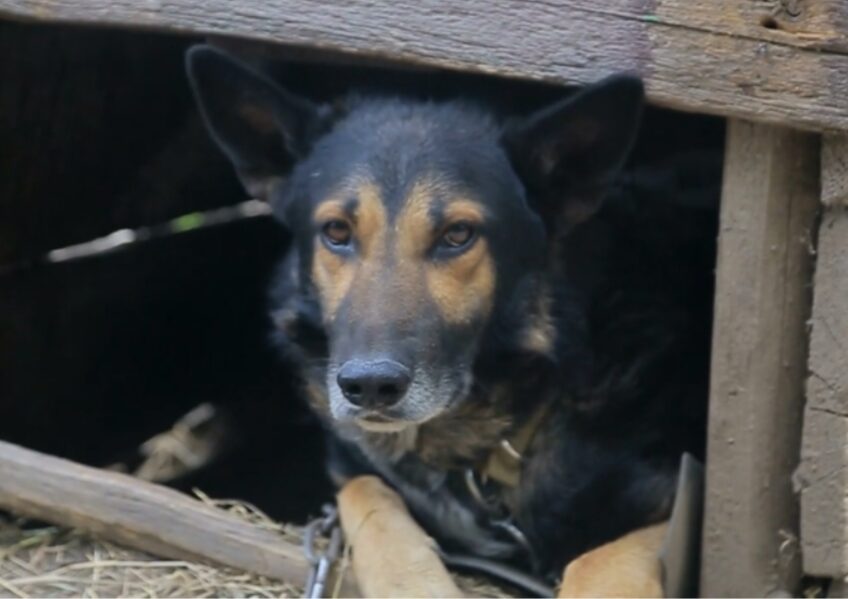
Aggression in dogs is a complex issue that can be caused by a variety of factors like genetics, environment, and training. Different breeds have different risk levels when it comes to displaying aggressive behavior.
Understanding the factors that can lead to aggression can help owners select the least aggressive breeds. In this section, we will explore the main factors that influence aggression in dogs.
Genetics
Genetics is one of the biggest determinants of a dog’s aggression level. It is likely that some particular breed combinations will create more aggressive dogs than other combinations. For example, breeds such as Staffordshire Bull Terriers, American Pit Bull Terriers, and Doberman Pinschers are more likely to display aggression than other breeds, even when raised in loving and caring homes with good nutrition and adequate care.
Be sure to research any breed or mix of breeds before bringing a new pup home to ensure that it is a good fit for your home environment.
Socialization
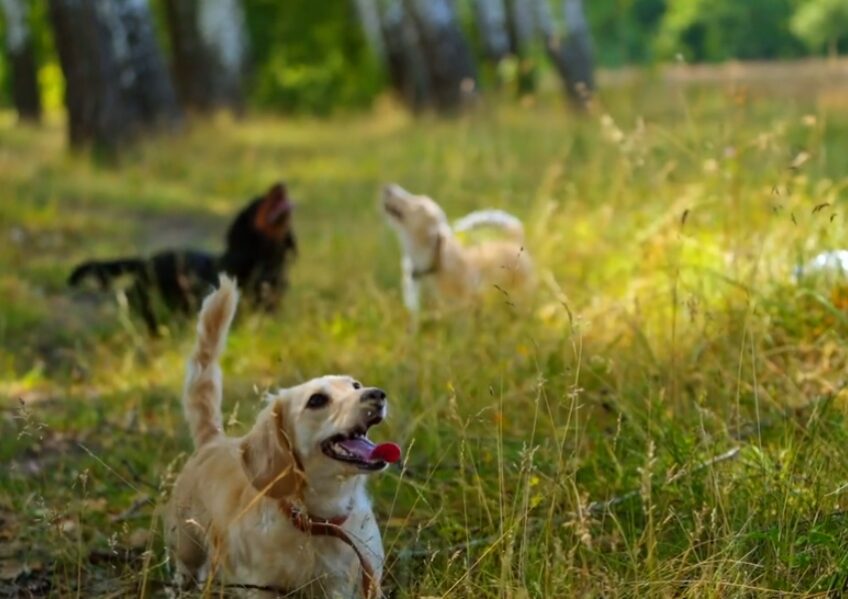
Socialization plays an important role in determining the level of aggression a dog exhibits. Puppies that are socialized from a young age and exposed to a variety of positive experiences with people, animals, and their environment are less likely to show aggression in adulthood.
It should include meeting other people (both adults and children) and animals on walks, trips to the vet or groomer, and attending obedience classes. Socializing dogs at an early age helps them learn appropriate behaviors around people and other pets, making it much less likely that they will act aggressively as an adult.
It’s also important for dogs to be properly trained using positive reinforcement techniques to ensure good behavior throughout their life.
Training
Training is an important factor that influences aggression in dogs. Everything from the type of training and the trainer’s methods to the level of consistency and reinforcement used can have a significant impact on a dog’s behavior. Using harsh methods or physical punishment to train a dog can increase its aggressive behavior, while more positive reinforcement-based training approaches can reduce it.
Reward-based training is one of the most effective ways to reduce aggressive tendencies and emphasize desirable behaviors through positive associations. This type of training focuses on rewards such as treats or verbal affirmations to let dogs know when they’re doing something right. It is important for owners to maintain consistency when it comes to rewarding certain behaviors as this will help reinforce them in their dogs’ minds.
It is also essential for owners to start socializing their puppies as early as possible, even/especially in isolation due to current events. This gives puppies an opportunity to interact with other animals and people, helping them build confidence and familiarity before these situations become threatening. Even adult dogs may benefit from regular socialization drills with other dogs that have been carefully selected for compatibility with them. Such interactions will show the dog that there are other relationships out there besides its primary bond with its owner or family members; this type of bonding has been proven by studies to help reduce aggressive tendencies over time.
Health
Health is one of the most important factors that can affect a dog’s aggression. Dogs suffering from an illness or injury may become aggressive because they are in pain and could possibly view even a friendly touch as threatening or uncomfortable.
Medical conditions like kidney failure, paralysis, Lyme disease and pancreatitis can contribute to the development of aggression. It is important to rule out any underlying medical issues before diagnosing behavioral problems and intervening with aggressive behavior modification.
Also, age can play a role in canine aggression. Young puppies that have not been properly socialized during the critical period of adolescence may become more easily aroused and more prone to aggressive responses later in life. Older dogs often display signs of aggressiveness due to cognitive decline, which causes confusion and increases defensive behaviors, such as growling, barking, and biting.
The presence of genetics, prior experiences, environmental stressors, and spay/neutering status are all potential contributing factors influencing aggression in a dog’s behavior pattern. Proper veterinary health care is paramount for all dogs but especially necessary for those displaying signs of aggression-related behaviors.
Environment
Many factors can influence aggression in dogs, including environmental factors. The environment in which a dog is raised has a profound impact on the levels of aggression expressed. Dogs that are housed in settings with inadequate or inappropriate socialization or social interactions are more likely to become aggressive as adults. Poorly maintained living areas, such as overcrowded and unsanitary conditions, can also be a contributing factor to aggressive behavior in dogs.
The behavior of owners can also be influential; owners that do not provide clear guidance, promote dominant relationships between people and their dogs or physically punish their dogs for exhibiting aggressive behaviors may create an environment where those behaviors go unchecked and even strengthened over time. Engaging in social or recreational activities with a dog can reduce the likelihood of aggressive outbursts. Education and awareness among owners on the importance of proper training and guidance are essential to developing a healthy relationship between pets and owners.
FAQs

Can these dog breeds be trained to perform tricks and other commands?
Yes, many of them are intelligent and can be trained to perform tricks and follow commands.
Are these dog breeds suitable for apartment living?
Some of them can adapt to apartment living, but they generally do better with a yard or access to outdoor space.
How do these dog breeds interact with children?
Many of them are known for their gentle and friendly personalities and can be great companions for children.
Do these dog breeds have any common health issues?
These breeds may be prone to certain health issues, such as hip dysplasia, ear infections, and allergies.
Can these dog breeds be left alone for long periods of time?
No dog should be left alone for long periods of time, but some of these breeds may be more independent and adaptable than others.
How do I choose the best least aggressive dog breed for my family?
Consider your family’s lifestyle, living situation, and preferences. Do your research and spend time with different breeds before making a decision.
Are any of these dog breeds good with other pets in the home?
Many of them can get along well with other pets in the home, but it’s important to supervise interactions and introduce them properly.
Do any of these dog breeds require professional grooming?
Yes, some of these breeds, such as the Shih Tzu and the Poodle, require regular professional grooming to maintain their coats.
Are any of these dog breeds known for being protective of their owners?
While these breeds are generally less aggressive, some, like the Labrador, may be naturally protective of their owners and their families.
Can these dog breeds be trained to be therapy pets or service animals?
Yes, many of these breeds are intelligent and adaptable and can be trained to be therapy pets or service animals.
Conclusion
In conclusion, there are many different breeds that are not naturally aggressive and can make good companions. From sighthounds to terriers and herding breeds, their temperaments can vary greatly, but they all possess friendly personalities. However, it’s important to remember that any dog can become aggressive under the wrong circumstances or if treated poorly and should always be supervised with children and other animals.
Ultimately, the best way to tell if a particular breed is right for your lifestyle is to spend time with that breed in order to get a better sense of its temperament. Doing research about a breed’s typical behavior will also help inform your decision-making process by allowing you to compare individual personalities with general temperament trends for those particular breeds.

